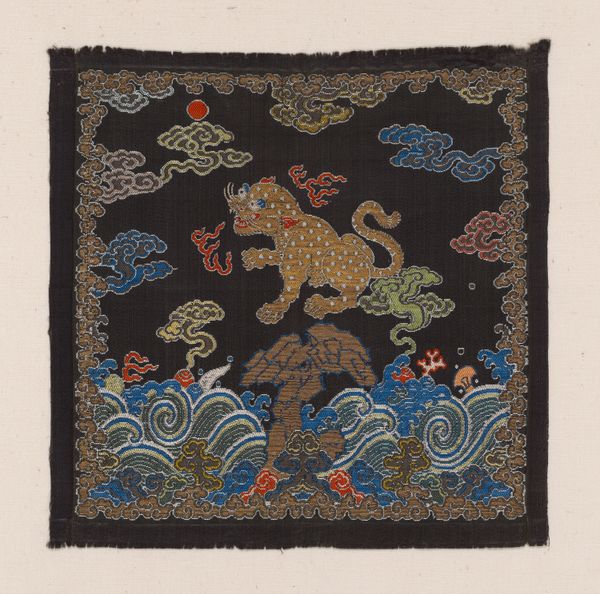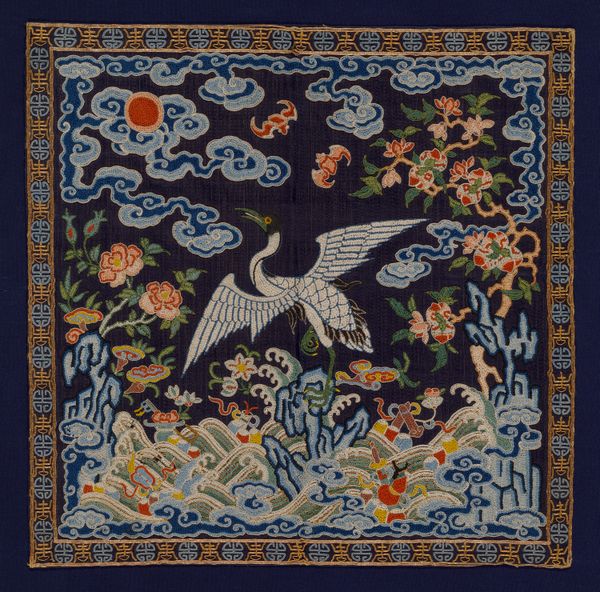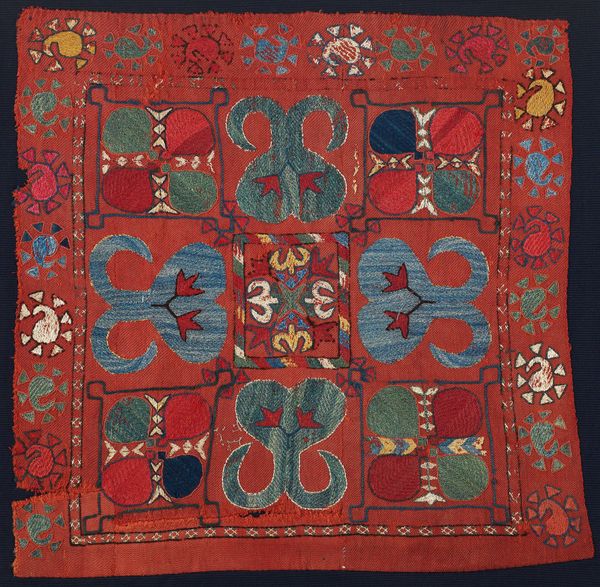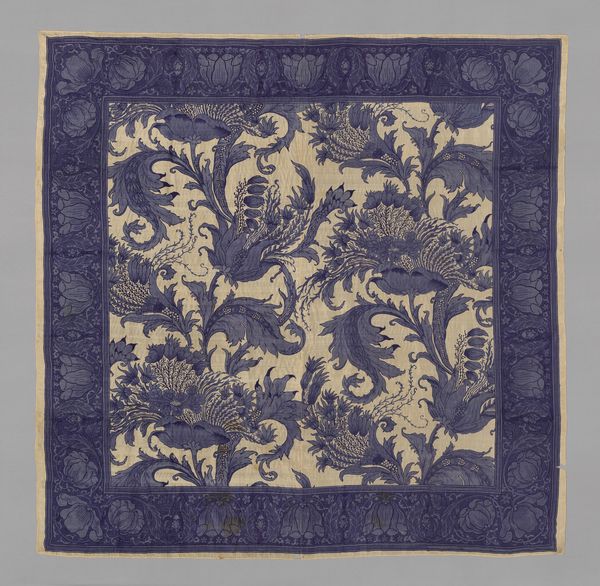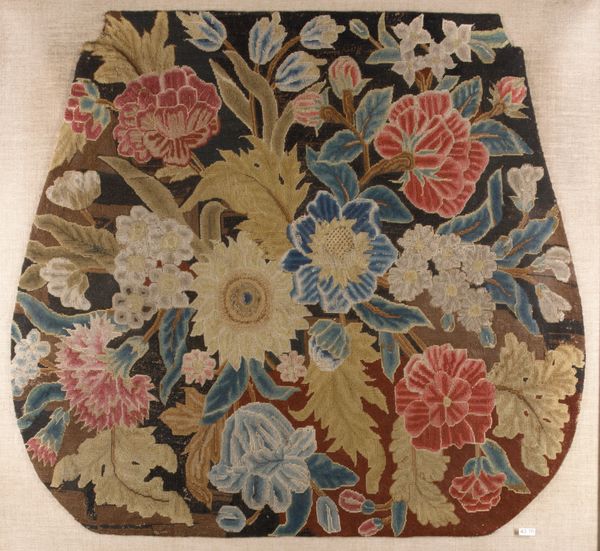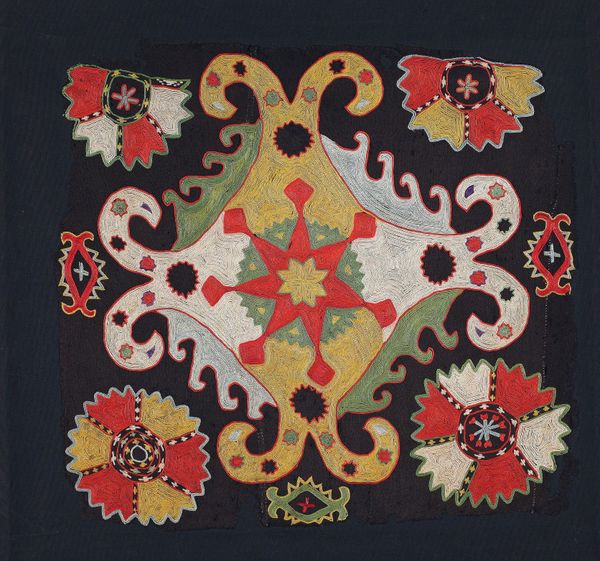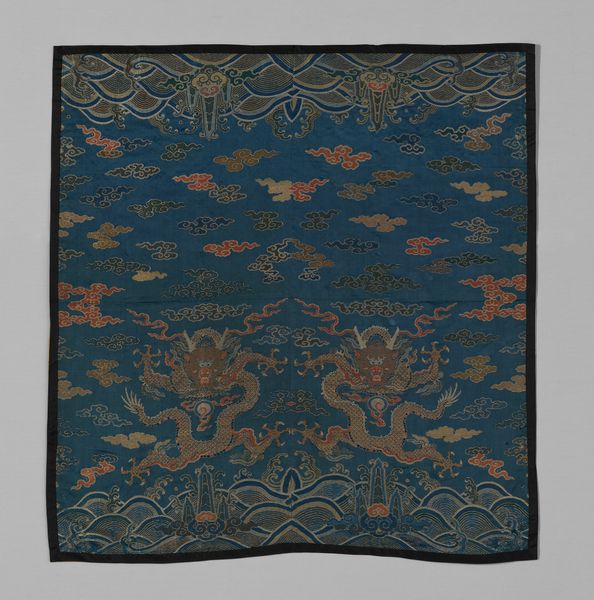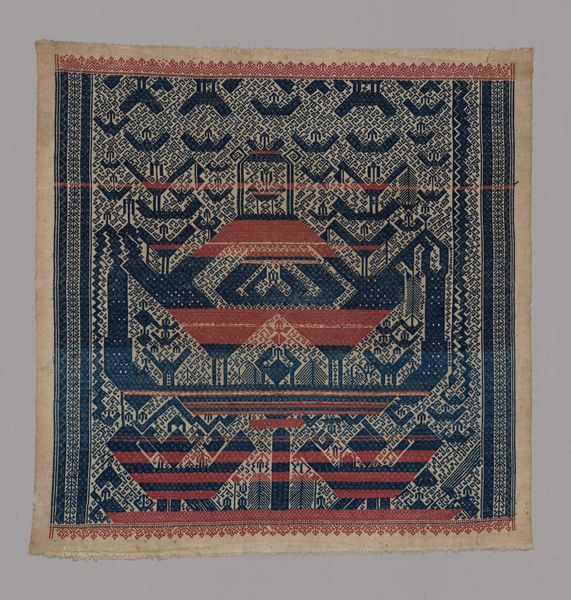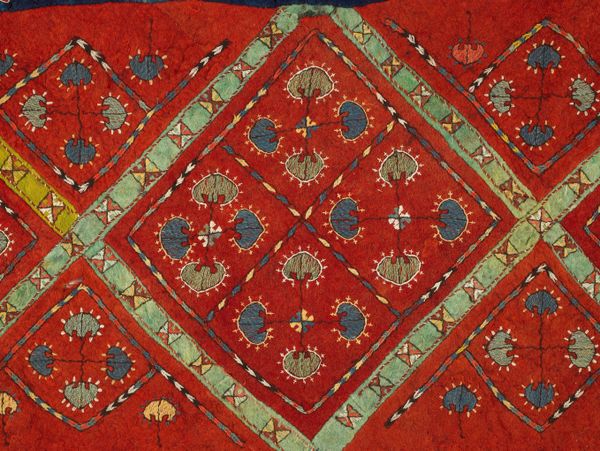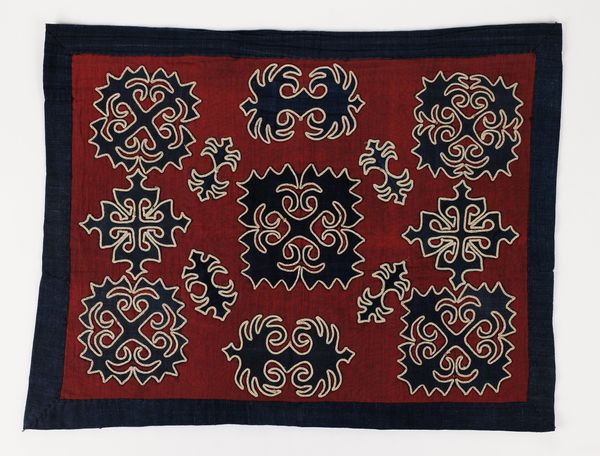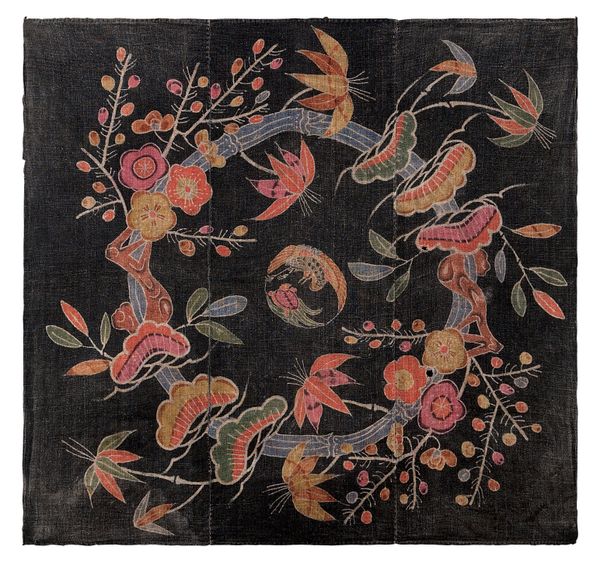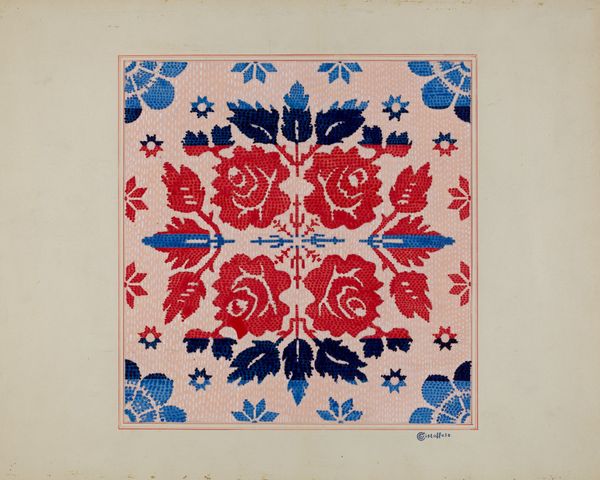
silk, weaving, textile
#
pattern heavy
#
natural stone pattern
#
silk
#
asian-art
#
weaving
#
textile
#
text
#
pattern background
#
pattern design
#
ethnic pattern
#
repetition of pattern
#
costume
#
china
#
regular pattern
#
pattern repetition
#
layered pattern
#
combined pattern
Dimensions: 30 × 31 cm (11 3/4 × 12 1/4 in.)
Copyright: Public Domain
Editor: So this is a textile work, "Badge," and it may have been made anytime between 1644 and 1911, made of silk, and it's currently held at the Art Institute of Chicago. It strikes me as highly decorative but maybe…symbolically coded? What stands out to you about this badge? Curator: It's precisely that symbolic encoding that captures my attention. Look at the phoenix. What feelings and associations arise for you when you see it juxtaposed with the swirling cloud patterns? Does it feel harmonious? Editor: I guess it feels intentional, but also, a little overwhelming. So many details. The phoenix seems to be the focus, maybe signifying something important… hope? Rebirth? And the clouds – good luck? I'm not sure I'm really picking up on its cultural significance though. Curator: Think of the phoenix in relation to Chinese cosmology. It’s one of the four symbols of the cardinal directions, associated with the South and the element of fire. But the badge itself has no definite date, so it's important to not overemphasize or limit our reading by anchoring it to any specific cultural moment. Do you notice how the waves are visualized, and how the image avoids deep perspective? Editor: I see, it's almost like the images are stacked vertically rather than receding into the distance. Now that you point it out, all the imagery does seem very deliberate, more about creating a plane of symbols, not an illusion of reality. Curator: Precisely. The weaving is rich with information, consciously rendered and meticulously crafted, evoking emotional and cultural resonance for a specific audience that we must reconstruct, rather than immediately intuit. These symbols were part of their collective cultural memory, not just decorative flourishes. Editor: So it's less about what *I* see immediately and more about understanding what those symbols meant *then*. I hadn't quite thought of it that way, but that's really helpful!
Comments
No comments
Be the first to comment and join the conversation on the ultimate creative platform.
